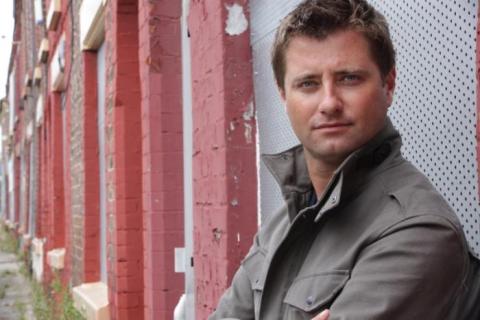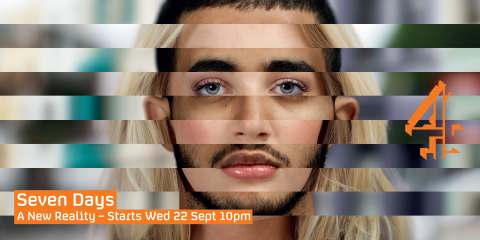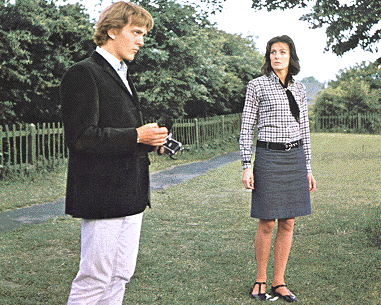Archive for August, 2013|Monthly archive page
Links for Orna
Some concrete examples of multiplatform TV (factual)
The Great British Property Scandal (case study video)
Seven Days (case study video)
Embarrassing Bodies: Live from the Clinic (case study video)
Big Fish Fight (case study video)
D-Day as it happens (post-TX website)
Foxes Live (post-TX website)
Health Freaks
My next multiplatform project is coming over the horizon. Here’s how it was reported in Broadcast the other day. It is my second experiment in transforming pre-recorded TV shows into live viewing events to make the experience more engaging for viewers whilst encouraging them to watch the live broadcast stream (and therefore the ads which keep the wolf from my door).
C4 orders health series and latest Kirstie show
6 August, 2013 | By Chris Curtis
Channel 4’s features division has continued its string of recent commissions by ordering a health series from Outline Productions and a Kirstie Allsopp show from Raise The Roof Productions.
The 6 x 30-minute Health Freaks will put traditional home remedies to the test to discover whether they have any medicinal value. In each episode a series of people who swear by a particular treatment or cure will present their favoured remedy to a panel of three GPs: Dr Pixie McKenna, Dr Ayan Panja and Dr Ellie Cannon. The trio will then debate the remedy and, if they decide it needs further investigation, will send it to a lab to be tested further.
The series, edited by Chris Walley and executive produced by Outline’s Helen Veale and Ross McCarthy, will test treatments such a breast milk being use to cure infections and an oat bath being a good way to tackle psoriasis.
Veale said: “This show is a way of allowing ordinary people to have their remedies scientifically analysed – something they may have been unable to do previously due to the time and cost constraints involved. We’ve already had some really interesting results.”
The series, which was ordered by commissioning editor for features Nick Hornby and will air in the autumn, also has an innovative multiplatform element.
Viewers will be asked if they have first-hand experience of the remedy in question [and whether they reckon it will succeed in its medical trial] and a live insert into the pre-recorded programme will feed the results of viewers’ engagement during the show back into the programme.
Channel 4 multiplatform commissioning editor Adam Gee said: “The interactivity of Health Freaks is effectively transforming a pre-recorded show into a live television event. This gives viewers more of a stake in the outcome, while encouraging them to watch the broadcast rather than time-shifting. It’s an early experiment in a largely unexplored area which benefits viewers, advertisers and the broadcaster alike.”
 The first such experiment was in the second series of Fish Fight earlier this year. We used Twitter to put pressure on the supermarkets by whacking them with 16,000 tweets over a 3-minute ad break as see here:
The first such experiment was in the second series of Fish Fight earlier this year. We used Twitter to put pressure on the supermarkets by whacking them with 16,000 tweets over a 3-minute ad break as see here:
Article extract courtesy of Broadcast
Gee male on Gmail
So as you know, as a Gmail user, Google scan the contents of all your emails, regardless of the confidentiality or sensitivity of the content, in order to target advertising at you – and, it turns out, possibly forward stuff to the US National Security Agency. Google’s lawyers refer to it euphemistically as “automated processing” (DoubleSpeak at its finest). Eric Schmidt, Google’s executive chairman, memorably used the C Word in summarising the corporate policy behind this: “Google policy is to get right up to the creepy line and not cross it.”
In May a class action centred on data-mining was filed against Google claiming that the company “unlawfully opens up, reads, and acquires the content of people’s private email messages”. Google’s response last month was that Gmail users have no “reasonable expectation” that their emails are confidential.
The Google lawyers use this telling analogy in their defence: “Just as a sender of a letter to a business colleague cannot be surprised that the recipient’s assistant opens the letter, people who use web-based email today cannot be surprised if their communications are processed by the recipient’s ECS [electronic communications service] provider in the course of delivery.” The skewed nature of their world view is given away by the notion that the modern world of work is full of people with personal assistants. And of course the analogy is equally wide of the mark because Google is more like the Post Office where we have no expectation of the deliverer to open the envelope and “acquire” our content or that of our correspondents (and where what interventions there are are the work of the odd rogue low-life at Mount Pleasant rather than a planned mechanised system on an uber-industrial scale).
Beyond the question of whether Gmail users do actually understand what they are signing up for in terms of surrendering their basic privacy, a huge issue here is that anyone corresponding with a Gmail user is likewise having their data pillaged and raped. Which should raise a big question mark over the use of Gmail in business contexts. Some way beyond the creepy line I’d argue and I wouldn’t be surprised if it turns out to be the wrong side of the legal line too.
The Commonplace Book – Inspiration and Perspiration
6/8/13
Simple Pleasures part 4 was inspired partly by an Ian Dury song (via my first blog Simple Pleasures) and partly by an article from the pen of the poet Andrew Motion. In that line of heritage, I was reading Steven Johnson’s book Where Good Ideas Come From and was much taken with his thoughts on the ‘commonplace book’, the practice of keeping a scrapbook of quotes and thoughts which he traces from John Locke in the late 17th century through to Erasmus Darwin (grandfather of Charles), ultimately linking it to Tim Berners-Lee’s inspiration for the World Wide Web. I’ve kept these kinds of notebooks and notes for any years but being reminded of their value in creative thinking, the repository for the ‘slow hunch’ and the petri dish in which disparate but related thoughts grow together, makes me feel encouraged to write here more often and in smaller bursts. Here’s one I wrote a couple of days ago after reading about the Commonplace Book and then chatting to an old friend of mine from the Universite de Savoie, year of 83…
4/8/13 Mangskog, Sweden: Sitting on the deck outside Bjorksuset (whispering of the birches), my friend Hanna’s house, this afternoon overlooking Mangen lake I was thinking a bit about Swedish neutrality in the War before Hanna told me a story from a documentary she made recently for NRK, the Norwegian state broadcaster. It was about so-called ‘war children’ in Norway (the off-spring of Norwegian women and German soldiers) and the on-going impact of the Second World War on Norwegians. Hanna filmed a woman who recently discovered her father was in fact a German bureaucrat of the Occupation, not the Norwegian man whom she had called daddy all her life, father of what had been her two brothers up to the point of this discovery in her advancing years. When she told her mother she had acted on some bothersome doubts from her childhood and uncovered her true parentage through a specialist agency her mother went nuts with her, majorly upset by having her secret unburied. And the brothers went crazy too, especially the older one who runs a big well-known Oslo-based shopping mall (he threatened to sue). In revealing her discovery the family imploded and she lost mother, (half-)siblings and extended family at a stroke. Although she acquired some half-brothers in Germany in the process. So seventy years after the occupation of Norway the dark forces still swirl, much as in France, like molten lava beneath the crust busting out when cracks appear.
6/3/13 I’m sitting on that same deck behind Bjorksuset, listening to the wind in the canopies of the silver birches. My grandparents had silver birches which fascinated me as a child in their inappropriately named street Cyprus Avenue. Their shiny trunks punctuated the way to the red postbox twenty yards down from their house, which at the age I am recalling seemed a major journey to be let loose on alone. The sound of the rustling leaves is a constant in this beautiful place in the West of Sweden. I think ‘suset’ in Swedish must be related to ‘susurration’ in English. The whispering sea-like sound made me think of the soundtrack of Antonioni’s Blow-Up – the mysterious breeze in the trees of the South London park where the ‘corpse’ lies worked its magic on me big time. And my train of thought then headed off down the line of the sound of wind in films and pulled in to these three stops:
Blow-Up (1966): the wind in the trees makes the park where the photographer (David Hemmings) accidentally photographs a dead body weird&wonderful – I always meant to visit that location, I’ll have to rewatch the movie then make the trip this autumn
Ryan’s Daughter (1970): The eponymous Irish colleen and the English captain make illicit love among the bluebells in the West of Ireland and what David Lean shows us is the strong breeze shaking the treetops above them
Black Narcissus (1947): Michael Powell set nerves on edge in this English Romantic Technicolor tale by having the Himalayan wind blow constantly through the mountain-top convent in which a nun gradually succumbs to an irreligious magic
In all three (the last one in too sparse a landscape for leaves to accompany moving air) the whispering of the wind brings the magical and mystical to the scene.
At the nadir of my teenage years, when I retired to a room with David Bowie and Jane Austen to see me through, just like Renton prepares the room for going cold turkey in Trainspotting, Wild is the Wind struck me as a uniquely Romantic song a bit apart from his others, with a touch of epic, majestic magic.
The song was actually written for a film of the same name made in 1957 and recorded by Johnny Mathis. Bowie was inspired to cover it by Nina Simone’s version. It is to be found on his 1976 LP Station to Station which neatly brings this thought-train to its terminus.
Like the leaf clings to the tree
Oh, my darling, cling to me
For we’re like creatures of the wind
Wild is the wind, wild is the wind
 Leave a comment
Leave a comment














